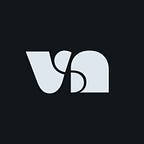Twista — Escheresque Letters
The typeface Twista, following in the tradition of impossible letter constructions, plays with false perspectives — it tricks the eye and attracts our gaze. Here is some background about this genre and about how Twista was designed.
M.C.
Maurits Cornelis Escher is the most well known creator of impossible perspectives and optical illusions. But of course he is not the first artist in this field: Oscar Reutersvär created the Penrose Stairs and Penrose Triangle (later made popular by psychiatrist Lionel Penrose and his father the mathematician Sir Roger Penrose — which is also where the names comes from), and there is a much older work by William Hogarth (Satire on False Perspective) which might be one of the first known works in this field.
Throughout the history of drawing and 2-dimensional graphic art, artists have found ways to imitate the 3-dimensional world on a flat surface. And, doubtless at the same time, they started playing with it, making mistakes by design, and seeing potential in creating paradoxical perspectives and worlds.
The work of M.C. Escher also captivated me from a very early age, way before I became fascinated by letters. Later on, seeing examples of how to combine the two really struck me.
There are plenty of examples of letterings or typefaces with an Escheresque feeling. Luc Devroye has a long collection on his website.
The most impressive ones for me are Macula by Jacques Le Bailly (aka Baron von Fonthausen) and Priori Acute by Jonathan Barnbrock. Macula takes it inspiration directly from the Penrose Triangle and creates a whole amazing alphabet out of it, whereas Priori Acute transforms the idea of absurd perspectives to the serifs genre. Macula in particular has had a big impact on my work and design.
For more examples, you can simply search for ‘Escher’ on MyFonts and you will find a handful more released typefaces. There are also some really nice images of Escher Alphabet letterings on Pinterest.
Design Process
My first source and inspirational kick-off for Twista came from totally outside the Escher world. In a specimen book with alphabets for phototypesetting, I found a typeface called Pluto and Pluto schattiert (Pluto Shaded) that caught my attention [Note: There is a contemporary typeface with the same name by HVD Fonts, which obviously has nothing to do with this one. And there is also a digital version of this typeface available under the name Capitalus Diabolus]. It was the gradient shading which I had never seen before. A very rough attempt to create some 3-dimensional feeling, a bit naive, but very lovely. It seemed only a few steps away from one of my favorite typefaces: Calypso by Roger Excoffon!
Unfortunately, the book did not provide any further information about this Pluto typeface, or about the publisher or the designer, nor could I find any further background information myself, but it is also listed at Fonts In Use.
The first drawings for Twista was an adaption of the Pluto concept, with some more compact/condensed shapes. After several attempts to create an interesting design, I found it all looked a bit like the Russisch Brot letters I used to eat in biscuit form in my childhood, and did not feel satisfied. I finally ended up bringing some extra confusion into the 3-dimensional design, playing around with the shapes and lines. This was challenging my mind and starting to bring in the fun I was searching for. Even my wife was hooked and started to draw letters (thank you Julia!).
Halftone experiments
After creating the concept and path for the outlines, I still needed to find a solution for the 3D plasticity.
I made countless attempts at creating the perfect halftone gradient, finding the right easing and implementing it into the letters: set the size of the smallest and biggest dots, and adjust the velocity of growth. Like in type design, the steps of interpolation would never be linear, which would result in an unbalanced result, and the halftone gradient would need some easing as well. But, adapting the gradient to the letters didn’t go well. So in the end I opted for a shading variation without a halftone pattern.
The Twist(a)
So, Twista comes from the realm of impossible constructions, letters of illusions, the world of M.C. Escher. It takes its place in the tradition of typefaces playing with 3-dimensional drawings on a 2-dimensional surface.
Twista features three main styles: Shaded, Outline and Open Line, and comes with three additional styles as layers for design and combination (Background, Shading and Solid). All letters and characters come in two versions. A simple mechanism will flip between these letters automatically while typing (OpenType feature Contextual Alternates), but they also can be changed by hand.
Twista’s round forms make a smooth first impression, but draw you in for a second, closer look. Carefully choose which messages you set in Twista, they might be read with an invisible question mark added at the end.
Twista is available at MyFonts and Fontspring.
P.S.: Outtakes
Twista was designed in countless hours of contemplation, desperation and a going-with-the-flow mood. From time to time the drawing tool went its own way and produced some accidents, some of them worth holding onto as further inspiration…
